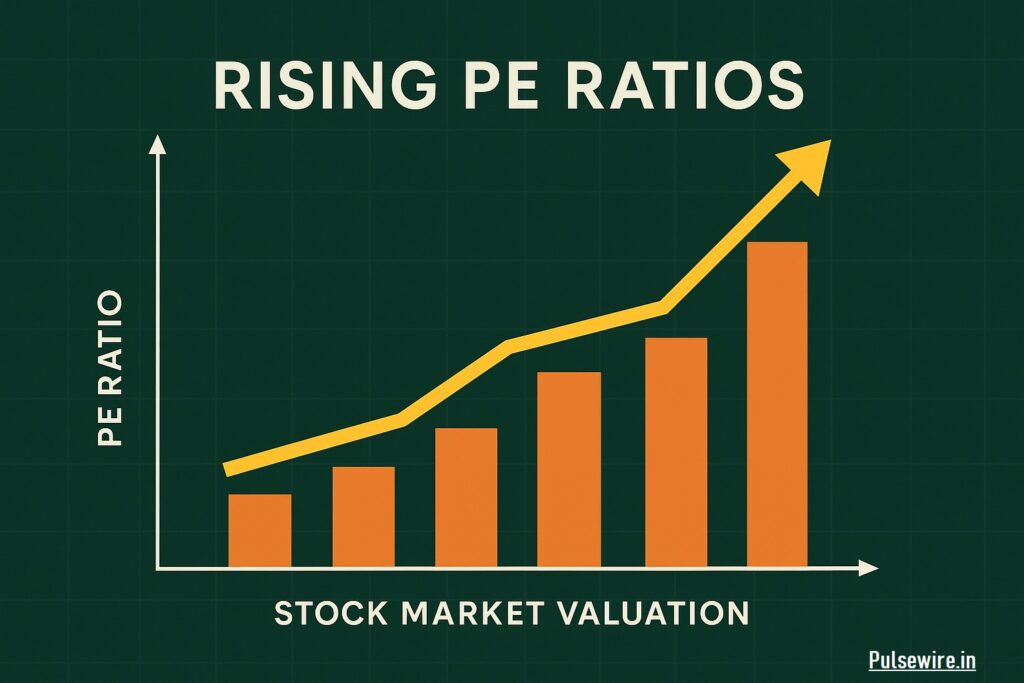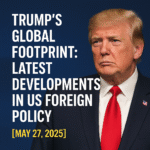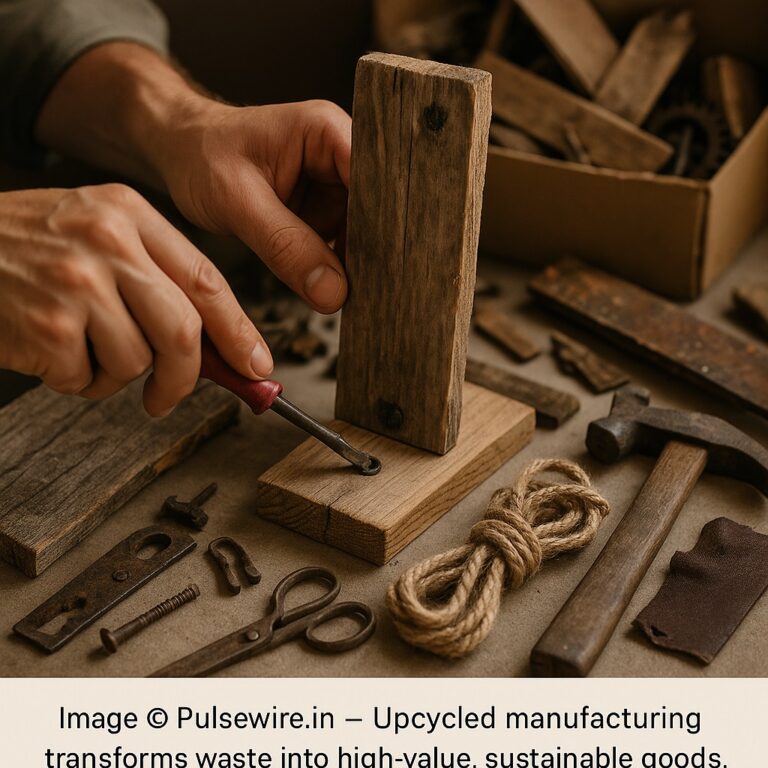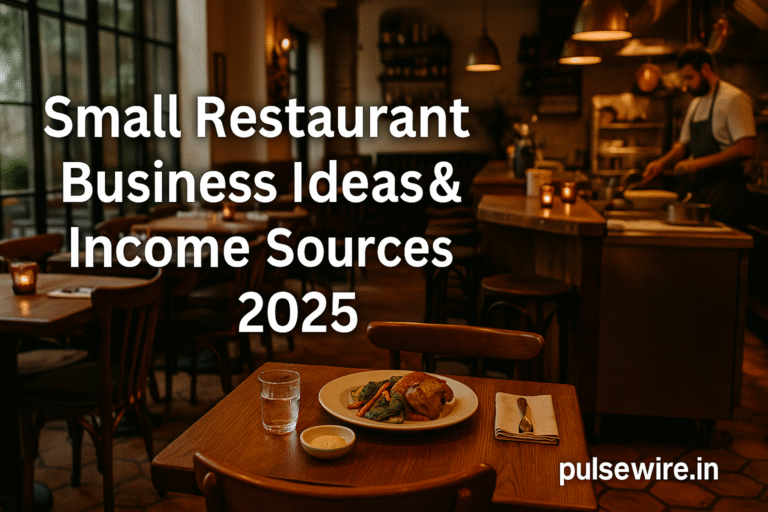
Written and reviewed by the Pulsewire Financial Desk – delivering data-backed insights for Indian investors.
The Indian equity market has entered a phase of exuberance as some Nifty50 companies now trade at over 100x their trailing 12-month earnings. These valuations have ignited debates about whether such numbers are sustainable—or signs of speculative overreach.
In this detailed analysis, we highlight three Nifty50 stocks—Trent Ltd, Nestlé India, and HDFC Life Insurance—that belong to this elite 100x PE club. We examine the reasons behind their sky-high valuations, growth potential, associated risks, and what it all means for long-term investors.
📊 What Is PE Ratio and Why Does 100x Matter?
The Price-to-Earnings (PE) ratio reflects how much investors are willing to pay for every rupee of a company’s earnings. A 100x PE means the stock price is 100 times its earnings, implying either:
- Extraordinary future growth expectations
- Scarcity of quality investments in that sector
- Over-enthusiastic market sentiment
While a PE between 15–25x is typical in stable markets, crossing 100x is rare and calls for cautious evaluation.
🏆 Top 3 Nifty50 Stocks Trading Above 100x PE
1. Trent Ltd (Tata Group)
PE Ratio: 121.4 (as of July 2025)
Trent, part of the Tata Group, has become a retail juggernaut through brands like Zudio, Westside, and Star Bazaar. Its rapid expansion and strong brand appeal have fueled high investor confidence.Growth Drivers:
- Consistent revenue growth and same-store sales expansion
- Digital integration and omnichannel retailing
- Strategic store locations across Tier-1 and Tier-2 cities
Risks:
- High dependency on discretionary consumption
- Competition from global retailers like H&M, Uniqlo
- High valuation leaves little room for earnings disappointment
2. Nestlé India
PE Ratio: 104.2 (as of July 2025)
Nestlé India, a subsidiary of global giant Nestlé S.A., is a leader in FMCG, with household brands like Maggie, Nescafé, Cerelac, and more. It trades at a high PE due to its defensive business model and consistent cash flow.Why Investors Love It:
- Stable margins and high ROCE (Return on Capital Employed)
- Minimal debt and robust dividend payouts
- Brand loyalty and market dominance
Risks:
- Slower growth in rural consumption
- Premium valuation limits upside
- Raw material inflation could squeeze margins
3. HDFC Life Insurance
PE Ratio: 106.7 (as of July 2025)
HDFC Life stands out as a private life insurer capitalizing on India’s underpenetrated insurance sector. The company enjoys strong institutional backing, brand credibility, and a growing retail customer base.What’s Driving the Valuation:
- Consistent VNB (Value of New Business) growth
- Digital distribution and bancassurance model with HDFC Bank
- Strong renewal premiums and persistency ratios
Concerns:
- Changes in regulatory policies
- PE premium may not sustain if growth slows
- Rising competition from LIC and other private players
📈 Are These Valuations Sustainable or Speculative?
Supporters argue that these companies justify high PE due to:
- India’s demographic dividend and rising disposable incomes
- Digital transformation and scalable business models
- Scarcity of fundamentally sound, scalable businesses
Critics, however, warn against repeating past bubbles where high valuations collapsed due to earnings disappointments.
⚠️ Investment Risks in High PE Stocks
- Valuation Risk: Stocks trading at high multiples often react sharply to bad news.
- Earnings Misses: Even a small earnings disappointment can lead to major corrections.
- Rate Hikes: Rising interest rates make future cash flows less attractive, pressuring valuations.
- Over-Ownership: Heavy institutional holding can trigger large sell-offs if sentiment changes.
🧠 Expert Tips for Investors (E-A-T Principles)
Following E-A-T (Expertise, Authoritativeness, Trustworthiness) is critical for YMYL (Your Money or Your Life) topics like investing:
- Study annual reports and analyst notes before investing.
- Use tools like Screener.in or Tickertape to validate valuations.
- Consult SEBI-registered financial advisors, especially for long-term planning.
- Diversify to reduce stock-specific risks.
✅ Conclusion
High PE ratios are not inherently bad—but they demand scrutiny. Trent, Nestlé India, and HDFC Life may have solid growth engines, but investors must weigh the risks of overvaluation. Fundamental research, financial discipline, and a long-term horizon are crucial in navigating such high-multiple stocks.
Key Takeaways:
- 3 Nifty50 stocks are trading over 100x PE: Trent, Nestlé India, and HDFC Life.
- Valuations driven by strong growth potential, but risks persist.
- High PE stocks require thorough due diligence and patience.
FAQs
Is a 100x PE ratio always bad? Not always. If backed by solid earnings growth, it may reflect investor confidence rather than overvaluation. Which sectors see high PE in India? Retail, FMCG, insurance, and tech often trade at premium multiples due to growth visibility. Where can I check PE ratios? Use platforms like NSE India, Screener.in, or Moneycontrol for updated PE metrics.
Also Read:
- Stock Market Basics for Beginners in 2025
- Top UK Fintech Apps of 2025 That Are Changing How Brits Manage Money
- Gold vs. Bitcoin in 2025: Which Is the Better Hedge Against Economic Uncertainty?
Sources & References:
- Economic Times (Original News)
- NSE India – Official Data
- Moneycontrol – Stock Insights
- SEBI – Regulatory Updates
Disclaimer: This article is for educational purposes only. It does not constitute financial advice. Please consult SEBI-registered financial advisors before making investment decisions. All investments are subject to market risk.

Sandeep Jadhav is a self-taught sustainability writer and the founder of Pulsewire.in. He shares insights on upcycled product manufacturing, green entrepreneurship, and eco-friendly business models. Though not formally certified, his work is backed by deep research and a strong passion for promoting climate-positive innovation.









